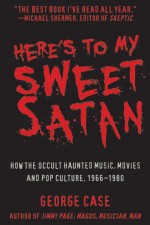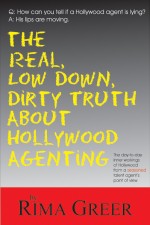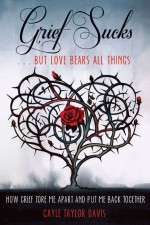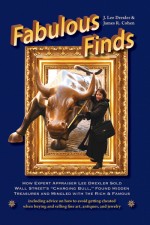Fiction
- Fantasy (1)
- Horror (1)
- Legal Thriller (3)
- Mystery (8)
- Science Fiction (2)
- Suspense (2)
List Grid
How the Occult Haunted Music, Movies and Pop Culture, 1966–1980
by George Case
Publication Date: March 18, 2016
In 1966, secular rationality seemed so dominant that Time magazine ran a cover story that asked, “Is God dead?” No one could have anticipated that mysticism, the irrational and the Occult would rule American popular culture for the next 15 years.
Here’s to My Sweet Satan is the first book to fully document the Occult craze of the 1960s and 1970s, when the Devil, demonic possession, and magic became the dominant themes of music, books, movies, and even Saturday morning cartoon shows.
A sweeping and masterful cultural history, Here’s to My Sweet Satan tells how the Occult conquered the American imagination, weaving together topics as diverse as the birth of heavy metal, Rosemary’s Baby, The Exorcist, New Age cults, Bigfoot, Scooby-Doo, Count Chocula cereal, the serial killer Son of Sam, and more.
Here’s to My Sweet Satan is both a fun, nostalgic look at some of the campier aspects of 60s/70s pop culture (remember Dark Shadows, pyramid power, In Search Of … and Chariots of the Gods?) and a serious inquiry into the origins of the dark, disturbing phenomena of the era, from the Manson Family murders to the Jonestown massacre. Cultural critic George Case gives a superb account of the crisscrossing artistic and cultural influences that intersected between the Occult, rock music, paperback fiction and pop culture of the period. (Case’s account of how Sgt. Pepper’s Lonely Hearts Club Band led to heavy metal is a must-read for all rock fans.)
Here’s to My Sweet Satan ties the many manifestations of the Occult craze into a single cultural movement, a crucial turning point that permanently changed American society, creating the cultural framework for the political power of the religious right, false accusations of Satanic child abuse, and today’s widespread rejection of science and rationality. An insightful blend of pop culture and social history, Here’s to My Sweet Satan lucidly explains how the most technological society on earth became enthralled by the supernatural.
About the Author: George Case is a writer on ideas and popular culture, and an acknowledged authority on the band Led Zeppelin. He is the author of Led Zeppelin FAQ, Calling Dr. Strangelove and several other books. Case has also contributed several articles to the social science journal Skeptic.
$18.95 ($23.95 Canada) • Hardcover • 6″ x 9″ • 196 pages
ISBN 978-1-61035-265-9
The Electrical Wizard of Schenectady
by Robert W. Bly
Charles Proteus Steinmetz presents the amazing life story of a forgotten genius who created the fundamental infrastructure that powers the modern world.
Thomas Alva Edison and Nikola Tesla have the glory, but the greatest electrical wizard of them all was Charles Proteus Steinmetz (1865–1923). Revered in the late 19th and early 20th centuries as a genius, but largely forgotten today, Steinmetz made the modern world possible through his revolutionary work to develop AC electricity transmission, the technology underlying today’s power grid. More than just a great scientist, Steinmetz was also one of the most colorful characters in American life. Standing just four feet tall with a pronounced spine curvature, Steinmetz was as well known for his unconventional political opinions, his fierce advocacy for social progress and education, his unusual home life and his private menagerie as for his technical achievements.
Charles Proteus Steinmetz gives a full appreciation of both the scientific achievements and remarkable personal life of this extraordinary man. Author Robert W. Bly, an acclaimed technology writer, gives a complete but reader-friendly account of the science of generating and transmitting electricity that will both educate readers and help them fully understand the importance of Steinmetz’s work.
Bly also writes sensitively of the struggles and joys of Steinmetz’s complex private life. A socialist and a political exile from Imperial Germany, Steinmetz overcame physical challenges and poverty to become one of the most influential scientific leaders of the United States. Steinmetz refused to marry or have children to avoid passing on his hereditary disabilities, but he created a family for himself by adopting his lab assistant and being a grandfather to his adoptive son’s children.
The first full biography of Steinmetz in many years, Charles Proteus Steinmetz brings the life, passions, and achievements of a great man to a new generation.
Audience: Science and technology enthusiasts, high school and college students, biography and history readers.
About the Author: Robert W. Bly has nearly four decades of experience as a science and technology writer. He is the author of more than 95 books and numerous articles on a variety of technical and nontechnical subjects. His science website is www.mychemset.com and his writing website is www.bly.com.
Available now!
Please note: We accept PayPal only on the website. For credit card orders, please call us at 800-345-4447. Thank you!
by Gerry Holzman
Publication Date: August 16, 2022. Click here to preview the book.
Charming, humorous, sometimes tragic, and always fascinating vignettes from a life spent in craftsmanship.
They say life is a merry-go-round—for Gerry Holzman, this has been literally and figuratively true. A master figure carver who has restored over 100 pieces of antique carousel art, created 250 pieces of original carousel carving, and was the head carver and executive director of New York’s landmark Empire State Carousel Project, Holzman has devoted the past 50 years to woodcarving, and his skill has taken him around the world as a student, teacher, craftsman, and artist. Throughout this giddy merry-go-round of a career, he has encountered many intriguing ways to use our brief time on earth and invites us to accompany him as he strives to understand and appreciate them all.
Wanderings of a Wayward Woodcarver is Holzman’s record of a lifetime spent in the craft and the many lessons it has taught him about what it means to be a carver and what it means to be a human being, plus a recounting of the many memorable characters he has met along the way.
From master carver Gino Masero, who taught Holzman much about carving, life, creativity, and decency, to Holzman’s students who touched his life deeply, to a sign carver who could not read, a witch who invited Holzman to visit her coven, and the mafioso who showed Holzman how to prevent his carvings from being stolen, Wanderings of a Wayward Woodcarver shows how a life in craft is the perfect viewpoint to see the whole of the human condition.
More about Gerry Holzman:
Gerry Holzman has been a professional woodcarver since 1971. During his career, Gerry has restored over 100 pieces of antique carousel art and has created approximately 250 pieces of original carousel carving. His commercial clients include Disney World, Cunard Cruise Lines, and the South Street Seaport.
$18.95 US • Trade Paperback • 6″ x 9″ • 250 pages
ISBN 978-1-610353-84-7
A Wounded Police Officer’s Struggle with the Burden All Cops Share
by Brandon S. Hultink
Publication Date: April 7, 2020
A former police officer tells his personal story of the long climb from depression to faith in the intense new personal memoir The Backpack.
An amazing journey from despair to hope, The Backpack tells the truth about the burdens of stress and trauma on police officers and presents an inspirational story of how one cop overcame physical and emotional wounds suffered in the line of duty.
“I can still remember the taste of metal in my mouth from the barrel of the gun . . .” After the shoot-out that put him in a wheelchair, police officer Brandon S. Hultink was ready to put an end to it all.
In his frank and compelling memoir The Backpack, Hultink tells how he came to the worst moment of his life, and how faith in God and the humility to accept help brought him out of depression, addiction and the wheelchair and back into successful life.
But Hultink’s story isn’t his alone — it is also the story of the thousands of police officers who struggle with depression and post-traumatic stress. Cops don’t do touchy-feely stuff; they stuff every trauma into a metaphorical “backpack” until the burden overwhelms them. Hultink writes unflinchingly of the mental health crisis affecting police officers and offers proposals for improving mental health services for police.
An intensely personal story of anguish and survival, The Backpack offers hope to everyone — police and civilian alike — who struggle with depression and pain.
About the Author: A graduate of Western Michigan University and the Thomas M. Cooley Law School, Brandon S. Hultink served for fifteen years as an officer with the Battle Creek, Michigan, Police Department and for ten years as an assistant prosecutor with the Calhoun Country Prosecutor’s Office. Hultink currently works as a parole agent for the Michigan Department of Corrections. He lives in Battle Creek with his wife and three sons. The Backpack is his first book.
$16.95 US • Trade Paperback • 6″ x 9″ • 140 pages
ISBN 978-1-61035-351-9
Available Now!
Gayle Taylor Davis had it all —a husband she adored, two successful daughters, and a career she enjoyed. Then one phone call took it all away, when a policeman called to tell her that her husband of 32 years had suddenly died of a heart attack. Plunged into the strange new world of grief, Davis began to write to make sense of her experience.
Grief Sucks … But Love Bears All Things is Davis’s deeply personal account of how she climbed out of grief, step by painful step — a no-holds-barred look at personal pain that is rarely shared or talked about. Davis reveals the worst moments of what she describes as “gut-wrenching, ass-kicking grief” — days of tears, nights of wailing, and thoughts of suicide — and teaches the reader through her example that one can survive the worst.
Grief Sucks isn’t a self-help book, but an account of suffering that prepares the reader for the worst that life inevitably inflicts on us all. Written for the recently bereaved, Grief Sucks directly faces the wound of losing a loved one, focusing on how one can live through emotional pain and coming out the other side.
Instead of encouraging passive acceptance of mandatory stages of grief, Grief Sucks shows readers that grief is s life on loss or survival.
A brutally honest and intimate portrayal of raw grief in all its pain and ugliness, Grief Sucks rejects simple-minded words of comfort to address loss with the stark truth: This is the worst pain you will ever feel. And you will survive it.
Fabulous Finds: How Expert Appraiser Lee Drexler Sold Wall Street’s Charging Bull, Found Hidden Treasures and Mingled with the Rich & Famous gives readers an insider’s experience of the glamorous world of high-value art and antiquities deals, as lived by Lee Drexler, a leading appraiser of fine art, furniture, antiques and jewelry for over 35 years.
Drexler reveals the inside story on many of the unique, high-profile appraisals she’s performed in her career, including her legendary appraisal of Charging Bull, the iconic Wall Street statue. Every art object has a human story behind it, and Drexler’s work on evaluating the possessions of the wealthy, famous, tasteful and vulgar has given her a novelist’s eye for bizarre tales and revelations of human character.
Fabulous Finds dishes on Drexler’s memorable and revealing encounters with celebrities, including Dr. Ruth Westheimer and Luciano Pavarotti, as well as some comic situations she’d rather forget—like when a famous rock star tried to get her into his bed. From the Hollywood star who treated Drexler like an honored guest, to the billionaire’s wife who begrudged her a few pieces of lettuce, to the beautiful young trophy wife who showed up for an appraisal nude, Fabulous Finds shows fascinating people being themselves.
Fabulous Finds also offers a wealth of insider’s advice on how to get the most out of buying and selling fine art, furniture, jewelry, antiques and collectibles. Drexler’s advice won’t make you an instant expert— but her hard- won knowledge of the inside world of art appraisals will help anyone to avoid being cheated. You’ll never look at antiques—or the people who buy and sell them—the same way again.
List Grid
 Updating…
Updating… 









